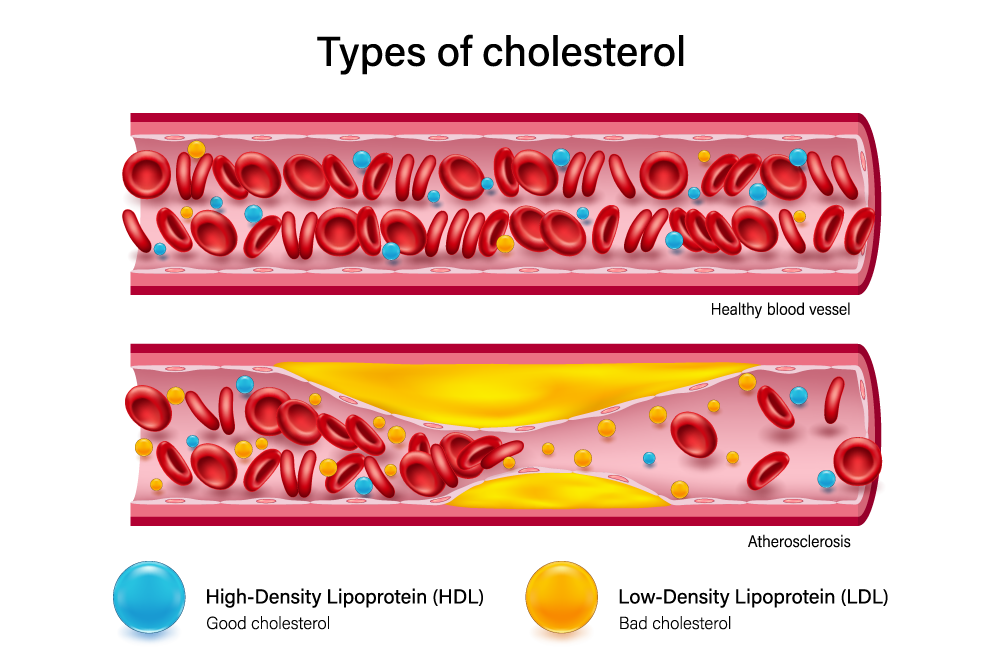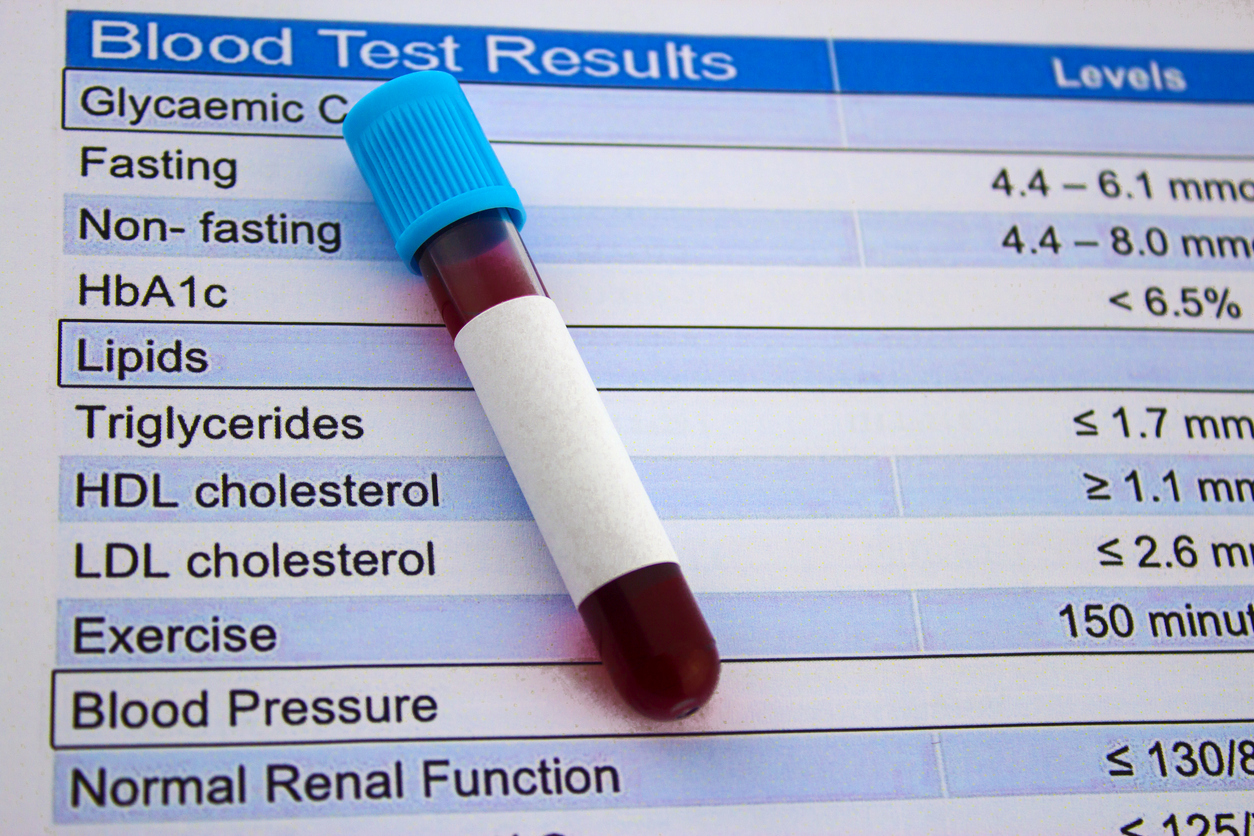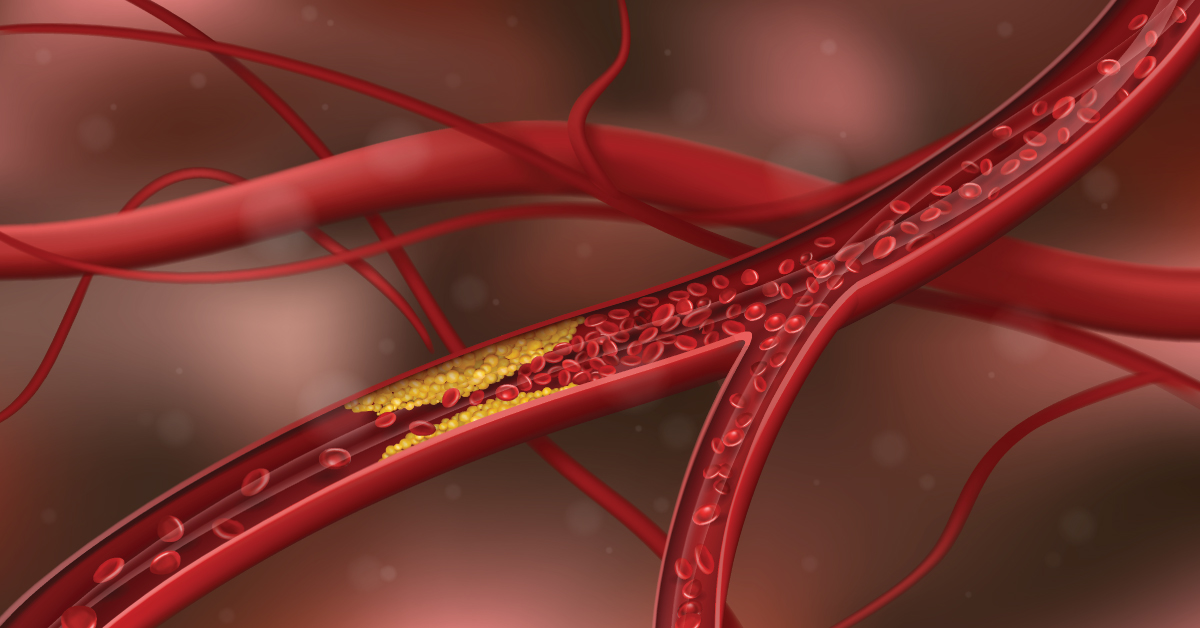February is American Heart Month, a perfect time to focus on your cardiovascular health. We all know heart disease is a serious issue, but taking charge of your cholesterol levels is a powerful way to protect your heart. Let’s break down what you need to know.
What is cholesterol, really?
Cholesterol gets a bad rap, but it’s actually essential. Our bodies cannot properly build cells, produce hormones, and even make vitamin D without it. Like with so many things, The problem arises when you have too much of the wrong kind. While your liver produces the cholesterol you need, it is the dietary cholesterol from animal products, combined with genetics and other lifestyle factors, that can throw things out of balance.
Decoding your cholesterol score
Understanding the different types of cholesterol is key:
- LDL (“bad” cholesterol): Think of LDL as the delivery trucks that carry cholesterol to your arteries. Too many trucks can lead to traffic jams – or, in this case, plaque buildup (atherosclerosis). This buildup narrows arteries, reducing blood flow and significantly increasing your risk of heart attack and stroke. Lower is better when it comes to LDL.
- HDL (“good” cholesterol): HDL acts like the clean-up crew, picking up excess cholesterol from your bloodstream and taking it back to the liver for disposal. HDL is important for cardiovascular health, but newer research suggests higher levels than normal aren’t necessarily better.
- Triglycerides: These are another type of fat in your blood. High triglycerides, especially when combined with low HDL or high LDL, can raise your risk of heart problems. Managing your weight, diet, and exercise habits can help keep triglycerides in check.
- Total cholesterol: Your total cholesterol number is the combined measurement of HDL, LDL, and triglycerides. While it gives a general overview, it’s the individual numbers that paint the most accurate picture of your heart health.

Taking charge of your cholesterol
High cholesterol is common, but it’s manageable. Here’s how:
- Eat heart-smart: Focus on a balanced diet. Reduce saturated fats (found in fatty meats and full-fat dairy) and increase soluble fiber (found in oatmeal, beans, and apples). A registered dietitian can help you create a personalized meal plan.
- Move more: Exercise is a game-changer. Aim for at least 30 minutes of moderate-intensity exercise most days of the week. Even adding some weight training can make a difference. Check out fitness classes or the walking track at Welia Center to get started!
- Maintain a healthy weight: Even modest weight loss can have a positive impact on your cholesterol and reduce your risk of heart disease.
- Quit smoking: Smoking is a significant risk factor for heart disease. Quitting may improve HDL cholesterol levels, but more importantly, it removes one of the major factors for cardiovascular disease, which is smoking itself.
Need the inspiration to quit? Check out this recent article from the blog, Breaking free: Your Q&A guide to quitting tobacco.
Other risk factors
There are other factors that contribute to cholesterol levels that simply can’t be controlled.
- Genetics: Some people inherit genes that make it harder for their bodies to remove LDL (“bad”) cholesterol from the bloodstream, leading to higher levels even with a healthy lifestyle. Learn more about familial hypercholesterolemia.
- Family history: If you have a family history of high cholesterol, you are more likely to have high cholesterol. As a result, you may need to get your cholesterol levels checked more often than people who do not have a family history of high cholesterol.
- Gender: Men generally have a higher risk of high cholesterol compared to women before menopause.
- Ethnicity: Certain ethnicities may have a higher predisposition to high cholesterol.
Know your numbers
The first step to knowing if you are at risk from high cholesterol is to get screened. A standard blood test will show the concentration of cholesterol being carried in LDL particles in your blood—an optimal number is 100 mg/dl or less

According to the Centers for Disease Control, most adults should have their cholesterol checked every four to six years. However, adults with a family history of heart disease or high cholesterol or a personal history of diabetes, very high cholesterol levels, high blood pressure, or obesity should be screened more frequently.
It’s not just an adult concern. Cholesterol should be checked starting early in life. Children and adolescents should have their cholesterol checked at least once between ages 9 and 11 and again between ages 17 and 21. Children who have obesity or diabetes may need to be screened for high cholesterol more often.
Work with your Welia Health provider
This information is a great starting point, but it’s no substitute for personalized medical advice. Discuss your cholesterol numbers and risk factors with your Welia Health provider. They can recommend lifestyle changes, determine if medication is necessary, and help you create a plan to keep your heart healthy for years to come.Don’t wait – schedule a checkup with your provider today! Call Welia Health at 1.800.245.5671 or use MyChart to schedule an appointment.













